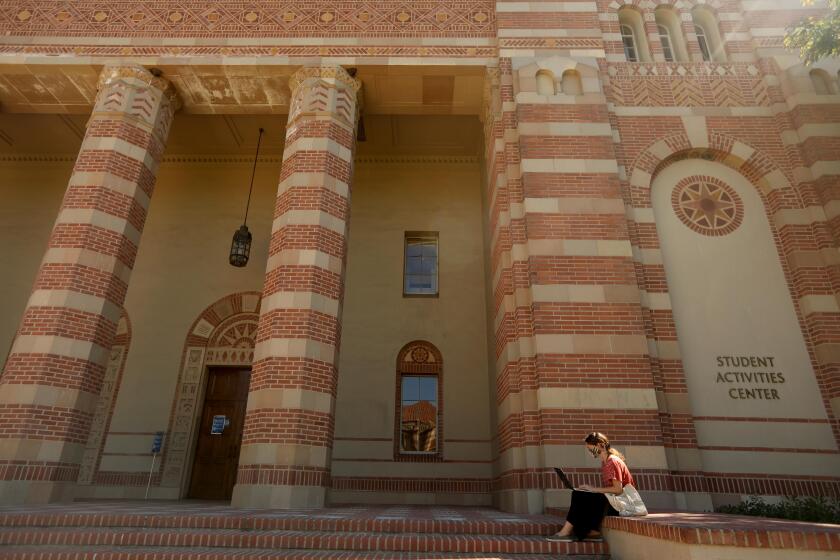Contaminated Playground at Cudahy School to Be Repaved
- Share via
CUDAHY — An elementary school that has been shut down for more than eight months because its playground is contaminated with petroleum waste is scheduled to reopen in the fall, Los Angeles school officials said.
The Los Angeles school board has approved plans to cover the playground at Park Avenue Elementary School with a layer of asphalt to prevent the sludge of petroleum chemical compounds and its vapors from rising to the surface.
School officials hope to have the school reopened at the beginning of the school year in September, school board member Leticia Quezada said Wednesday at a meeting of parents, teachers, residents and state and school officials.
Although the petroleum-contaminated soil and sludge will not be removed, parents, teachers and administrators said they are satisfied that the covering will protect the students. They said they are tired of waiting for some kind of solution to be found to clean up the ooze, and want to get back to their own school.
The elementary school, at 8020 Park Ave., was closed last summer after parents and teachers raised concerns about health hazards associated with the tar-like petroleum sludge that appeared in tiny puddles on the surface of the asphalt playground.
Since then, Park Avenue students have been divided and sent to Teresa Hughes Elementary School and Clara Street Primary Center, which operate year-round. Administrators and parents said Park Avenue students who have been attending these schools, which were overcrowded before Park Avenue was closed, have become much like guests who have overstayed their welcome.
“We need to go back to our own school,” said parent Maria Castillo, who has three children diverted from Park Avenue. “We’re not wanted (at the other schools) and we don’t want to be there.”
Principal Jose Velasquez, who has been forced to try to keep track of his Park Avenue students sent to two other campuses, said the whole experience has been an administrative nightmare. “What’s important now is (that) we get back to our school,” he said.
According to an environmental report released in January, Park Avenue school was built on an old city dump that contained petroleum-contaminated soil and several pockets of tar-like petroleum sludge.
But the report by Angelo Bellomo, director of an environmental engineering firm that conducted a series of tests last November and December, concluded that students would not face any health hazards as long as they did not have prolonged contact with the sludge. The report also found no dangerous traces of hazardous vapor in the air.
Although the report concluded that it would be safe for students to return to the school immediately, district officials have held off until they get a firm recommendation from the state Department of Health Services.
Richard Hume, an environmental engineer with the Health Services Department, said a decision will be made as soon as department engineers in Sacramento give their decision. That decision is expected late this week, he said. Once the state has reached a decision, a meeting will be held with Bellomo to discuss the details of construction.
At Wednesday’s meeting, a group of about 25 parents, teachers, administrators and residents were presented with two options for covering the playground.
Both plans involve digging about 12 to 20 trenches in the playground, filling them with gravel and laying pipes to vent gas to the surface, where it will be monitored for hazardous vapor.
One plan calls for a thick plastic liner to be sandwiched between layers of sand over the trenches, and a new asphalt surface poured on top. The other plan would leave out the plastic liner and instead pour a thicker layer of new asphalt over the trenches. Both, Bellomo said, would keep the petroleum sludge from percolating to the surface, and keep gases from seeping to the surface except through the ventilation system.
Both plans would take an equal amount of time to complete, but the option involving the plastic liner will cost about $750,000--twice as much as the other, Bellomo said.
Parents said they favor the more expensive measure.
Sign up for Essential California
The most important California stories and recommendations in your inbox every morning.
You may occasionally receive promotional content from the Los Angeles Times.







